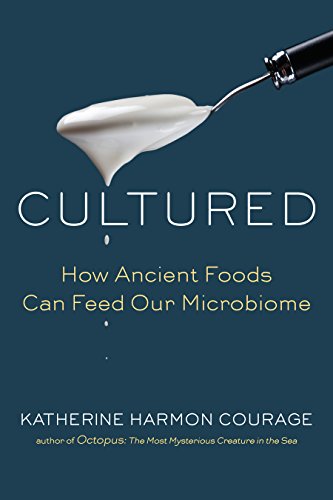Cultured: How Ancient Foods Can Feed Our Microbiome
How many of us think about the microorganisms that make up our foods and diversify our guts? In America, most people shy away from anything that contains bacteria or could carry “germs” and our culture has latched onto antibacterial products, pasteurization, and sterilized foods; however, our dietary past has been defined by fermented, live foods. In Cultured, Katherine Harmon Courage explores our gut microbiota and our long, cultural history of fermenting foods. She invites her readers to diversify their guts and to “know that we are not just what we eat but also what our microbes eat” (250).
Cultured dives into the world of fermented foods, and there are informative chapters on dairy, produce, grains, seeds and legumes, and meat and fish ferments. Each section goes into the science behind these foods and provides easy-to-follow recipes. From the traditional Japanese dairy drink yakult to Norway's fermented rakfisk, this book travels the globe to find the traditional foods that define both microbial cultures and social cultures. In addition to enjoying the tastes of fermented foods, we have to nourish our bodies with probiotic and prebiotic foods, and the prebiotic foods are the ones that stay in our gut for longer. Cultured goes into the nutritional and scientific make-up of our prebiotic foods and gives us tips for creating a well-balanced and diverse diet.
After reading this book, you will be inspired to make your own kimchi or to culture jars of yogurt. While your kitchen counter may end up looking like a science experiment, be confident that you are feeding both your curiosity and your gut biome by eating food that is alive. Through the Food Initiative, we ferment veggies, meats, and grains and we look at other cultures and countries for inspiration and guidance!
— Nicole Hatfield
